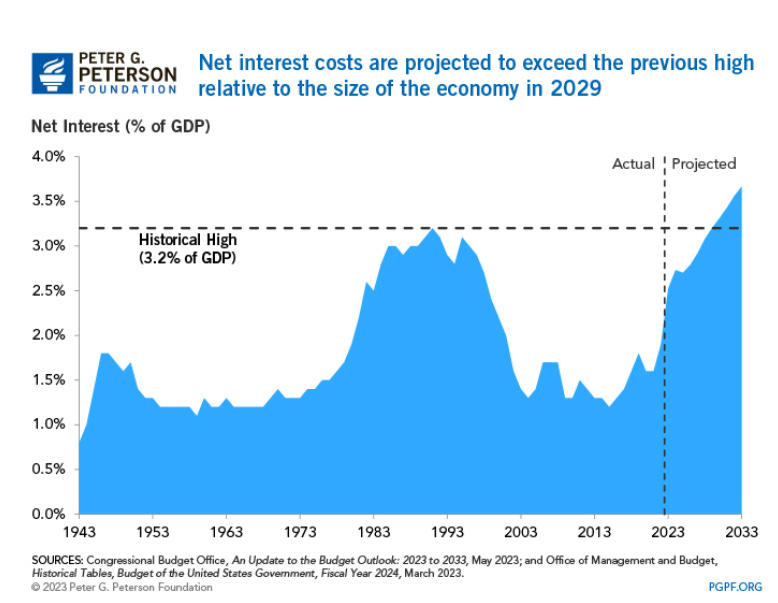Welcome to another issue of 5-1-1! I am Marianne O, an investment professional and author of The Learner’s Mind on investing, economy, and wellness ideas. For this Weekly, I include 5 links to relevant economic and investment news, finance, and wellness/idea pursuit based on what I read. I also include 1 important chart and 1 investment term to know. You can easily subscribe to my newsletter by clicking below.
Market and Data Comments
Based on the market table below, the notable change this week was the jump in VIX (the S&P 500 volatility or the fear index) and the decline in the major stock indices.
Also notable is the rally in the US 2-year government bond yield by 11bp and the rise in the 10-year government bond yield by 8bp. That means the yield curve has steepened by 20 bp although the yield curve is still inverted. The yield curve is the 10y government bond yield minus the 2y government yield. Usually, this means investors expect higher economic growth accompanied by higher inflation and higher interest rates.
You will ask: we recently talked about likely peak interest rates and disinflation in the US in the last 2 Weeklies. What happened this week?
Fitch downgraded the US AAA credit rating to AA+, citing US deterioration in fiscal deficit, high and growing government debt to GDP ratio, and the erosion of governance relative to AA and AAA-rated peers over the last two decades. Fitch projected the debt ratio to rise to 118.4% in 2025 vs. IMF’s projection of 125.8%. The ratio is 2.5x of the median ratio of AAA-rated sovereigns at 39.3%.
The downgrade mainly reflects governance and medium-term fiscal challenges but does not reflect new fiscal information. The downgrade should have little direct impact on financial markets as it is unlikely there are major holders of Treasury securities who would be forced to sell based on the ratings change.
~Goldman Sachs
US can print money to service its debt given its reserve currency status, initially reducing the debt-to-GDP ratio in the short-term (the denominator nominal GDP rises due to inflation), but in the long run, higher inflation causes investors to demand higher yields, thus raising real borrowing costs, making the government debt less sustainable as more of GDP needs to service the rising interest rate payments. So what is different now (vs. the 2011 S&P US rating downgrade) is the reappearance of the risk of inflation.

The Fitch downgrade plus the 60% expected increase in issuance in Treasury notes and bonds to $354 billion in the twelve months to fund the rising fiscal deficit spooked the US bond market (the 30-year bond sold off 19bp), spreading the sell-off to Europe and Japan (see table below). The saving grace is the nonfarm payroll gains slowing below 200,000 per month with income decelerating.
The other good news is China’s focus on consumption and housing market recovery and its pledge to “invigorate capital markets and boost investor confidence” after the July Politburo meeting. China understands it has a confidence problem.
Next week we will monitor US July CPI and PPI releases.
Economy and Investments (Links):
What’s Happening with the Economy? The Great Wealth Transfer (Ray Dalio on LinkedIn)
The Dollar is Now Better Value, says the Big Mac Index (But not Against the Yen) (The Economist)
- Refer to the previous Big Mac Index discussion.
What This Week’s U.S. Credit Rating Downgrade Means For Your Money (CNBC)
Finance/Wealth (Link):
Everything Is Cyclical (Morgan Housel, on Collab Fund)
+ Financial Planning for Women Needs to Be More Nuanced and Intentional
Wellness/Idea (Link):
Special Report: Heat and Heath (
by )If you want to read about better health based on scientific reporting, this is your newsletter. I particularly resonated with the piece he mentioned “Why Extreme Heat Kills So Quickly” because I had a similar experience hiking to the bottom of the Grand Canyon last year under extreme heat! Be prepared and mindful, and you will still enjoy the beautiful hikes!
One Chart You Should Not Miss: Government Debt to GDP Ratio (G7 + China, 2000 to 2028 forecast)
As mentioned above, the US general government debt at about 120% of GDP in 2023F is both high and rising (doubled the level in 2007). IMF expects the US debt ratio to be the second highest among the G7 countries, with Japan being the worst.
Also noted above, the US dollar is a reserve currency, and the US government can print/inflate its way out, so default on its debt is not a problem. However, the holder of US government debt can still lose money as yields increase. In Japan, the largest holder of Japanese government bonds is the Bank of Japan (domestically owned), rendering a default unlikely. But inflating the debt problem away only hurts the economy long-term.

One Term to Know: Diversification
Diversification is an investment strategy that mixes a wide variety of investments within a portfolio to reduce portfolio risks. Diversification can be across regions, countries, sectors, industries, and factors, down to individual stocks/bonds. Diversification can also include private or alternatives such as real estate, infrastructure, and private equities, but these vehicles are usually for more sophisticated investors, such as pension funds and endowments.
The chart below shows the “periodic table” of returns of various asset classes. Note each year, a different asset class performed the best while a different asset class performed the worst. The next chart shows the 10-year annualized historical return of various asset classes.
While the argument for diversification is valid, in the past 10 years, US equities have continued to lead the pack in performance, fuelled by the growth in high tech and now AI.
A reasonably diversified portfolio can comprise US/European/Japanese equities, high-yield or emerging market bonds, cash, and infrastructure investments.


Please do not hesitate to get in touch if any questions! If you like this weekly, please share or subscribe to my newsletter.



